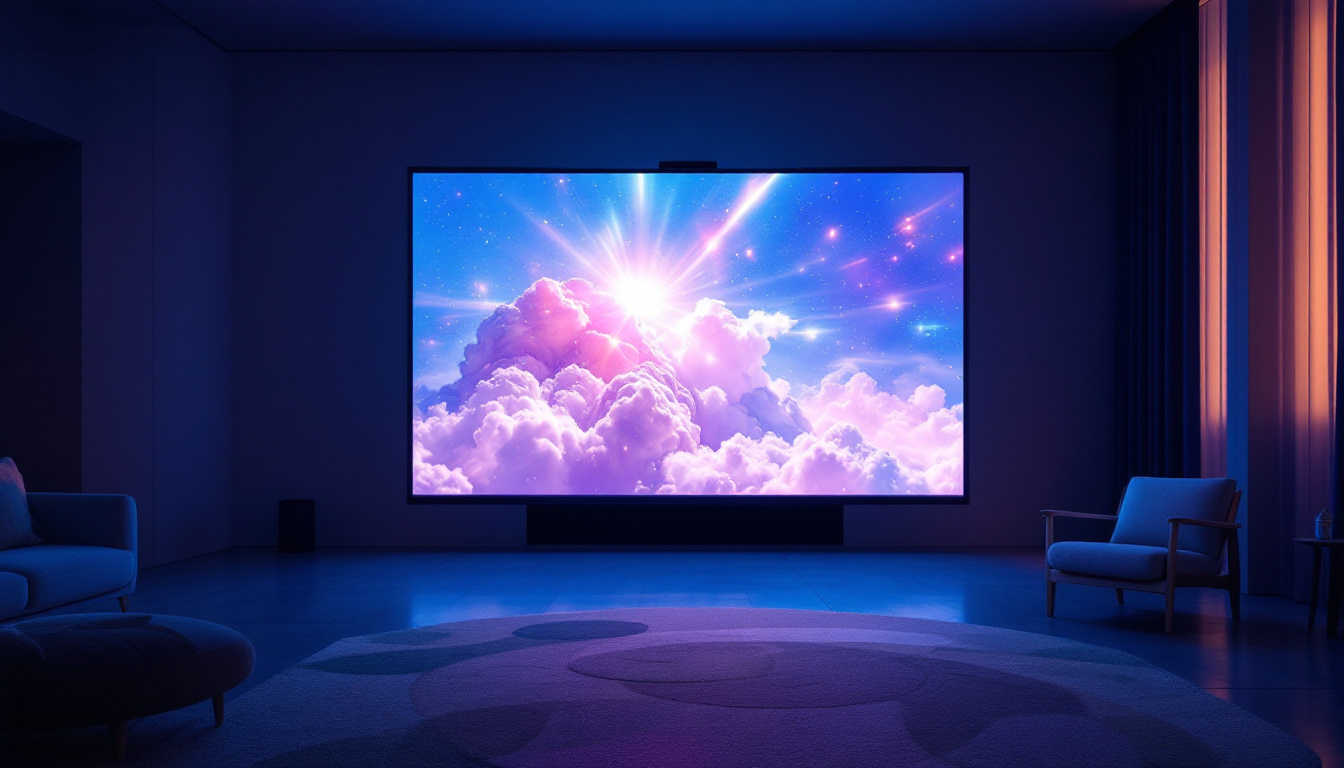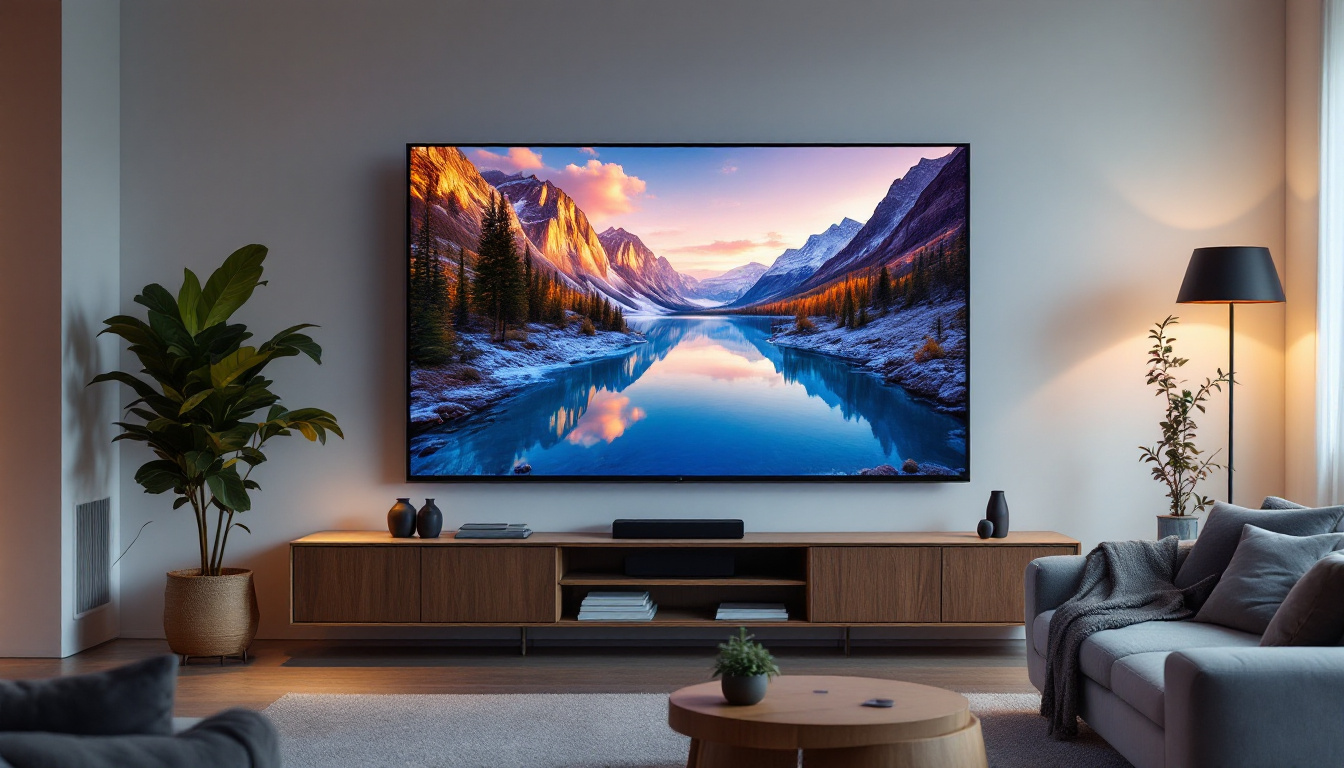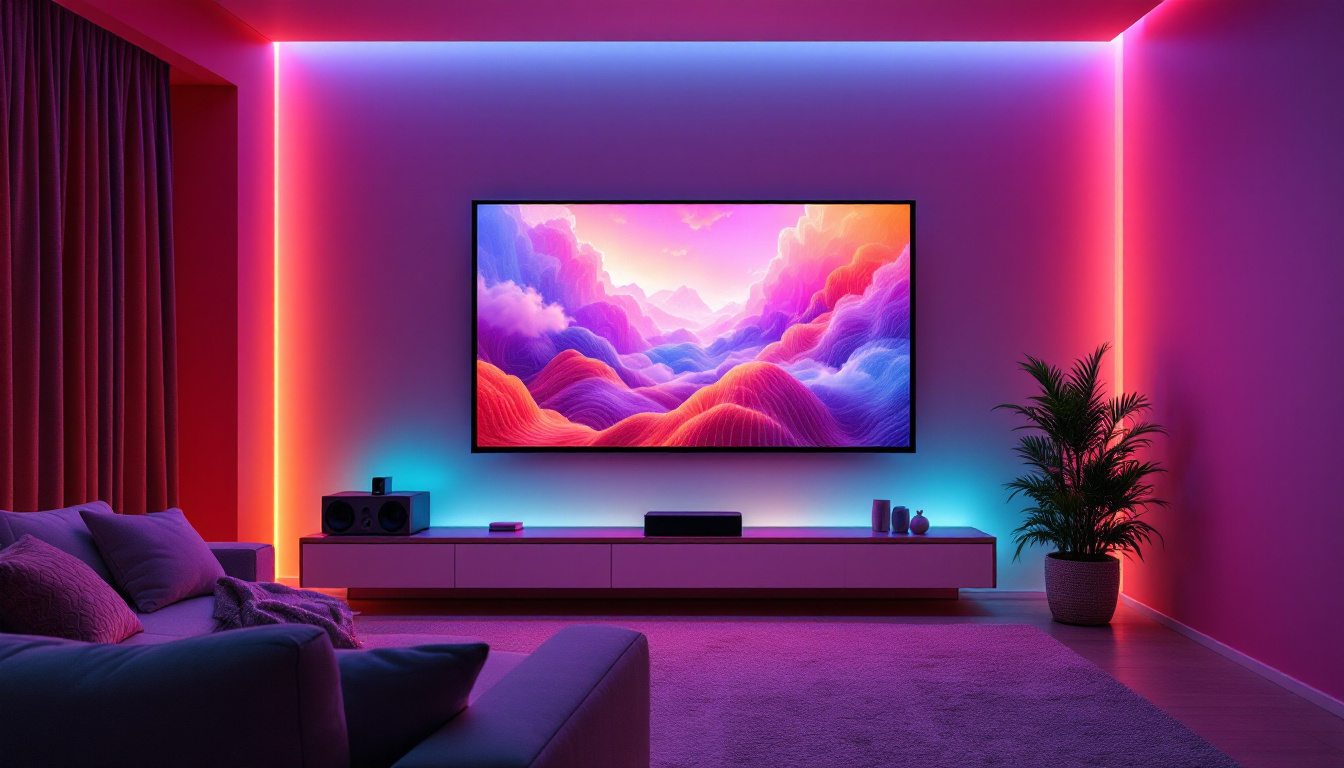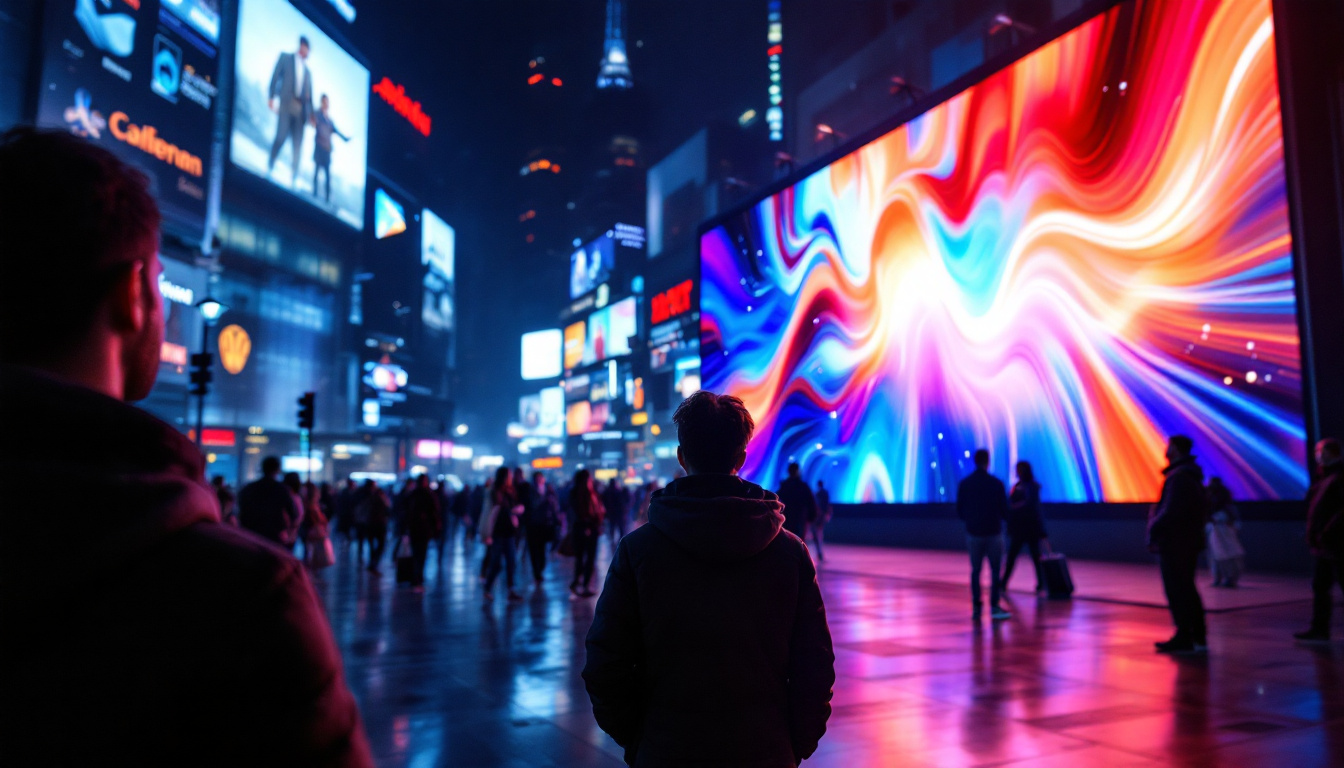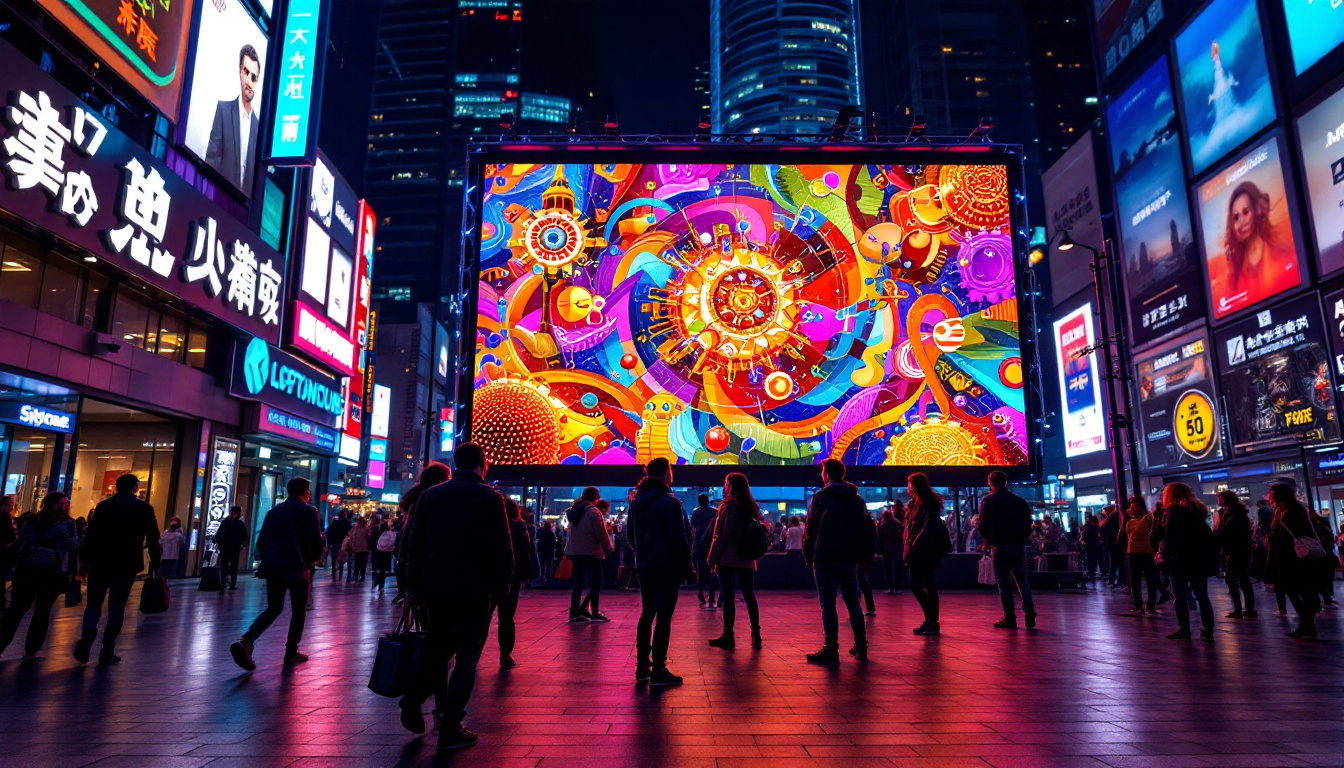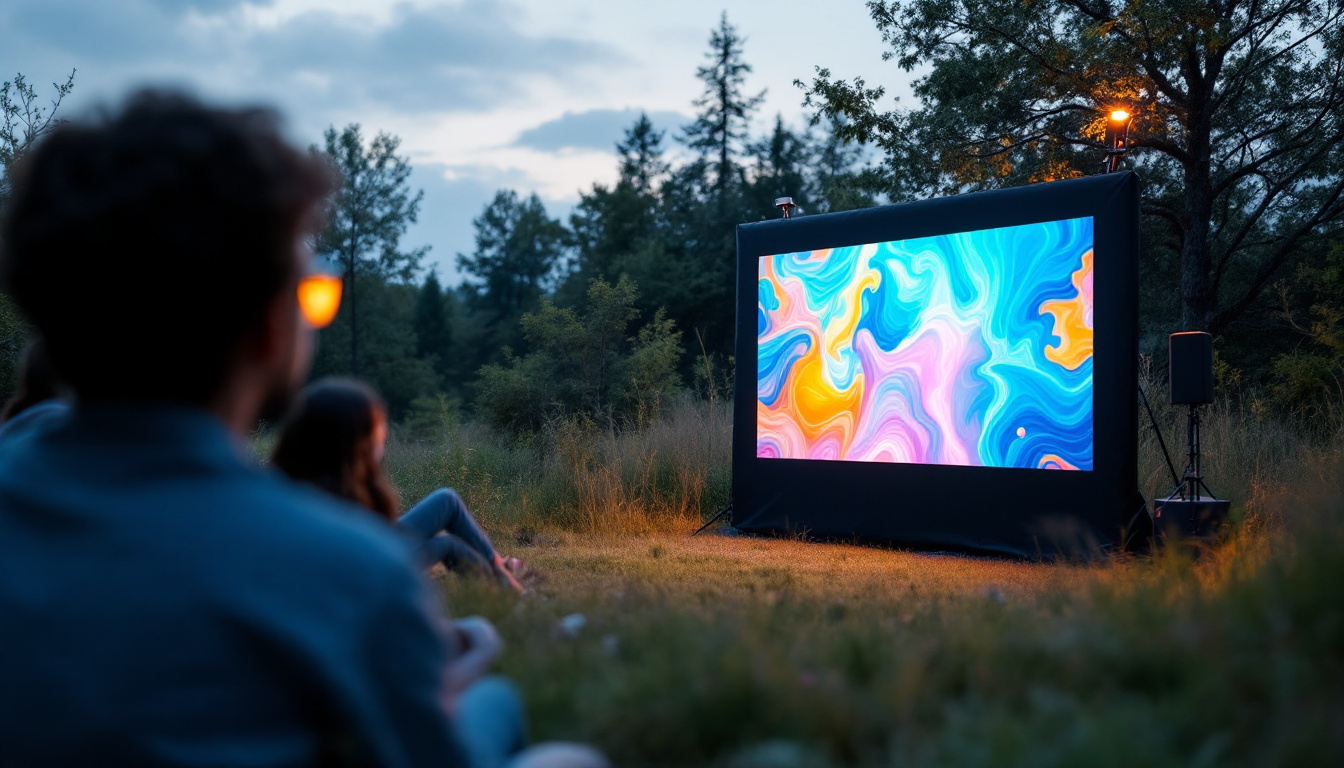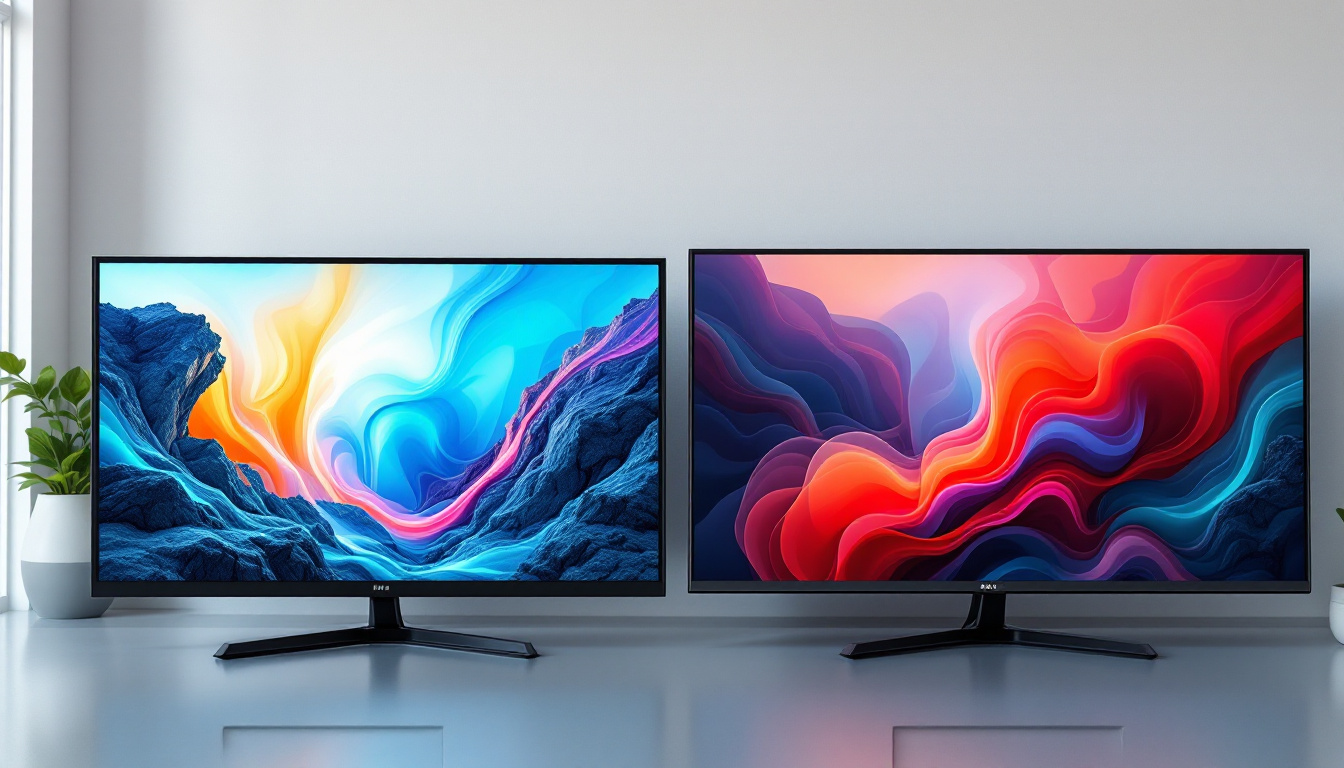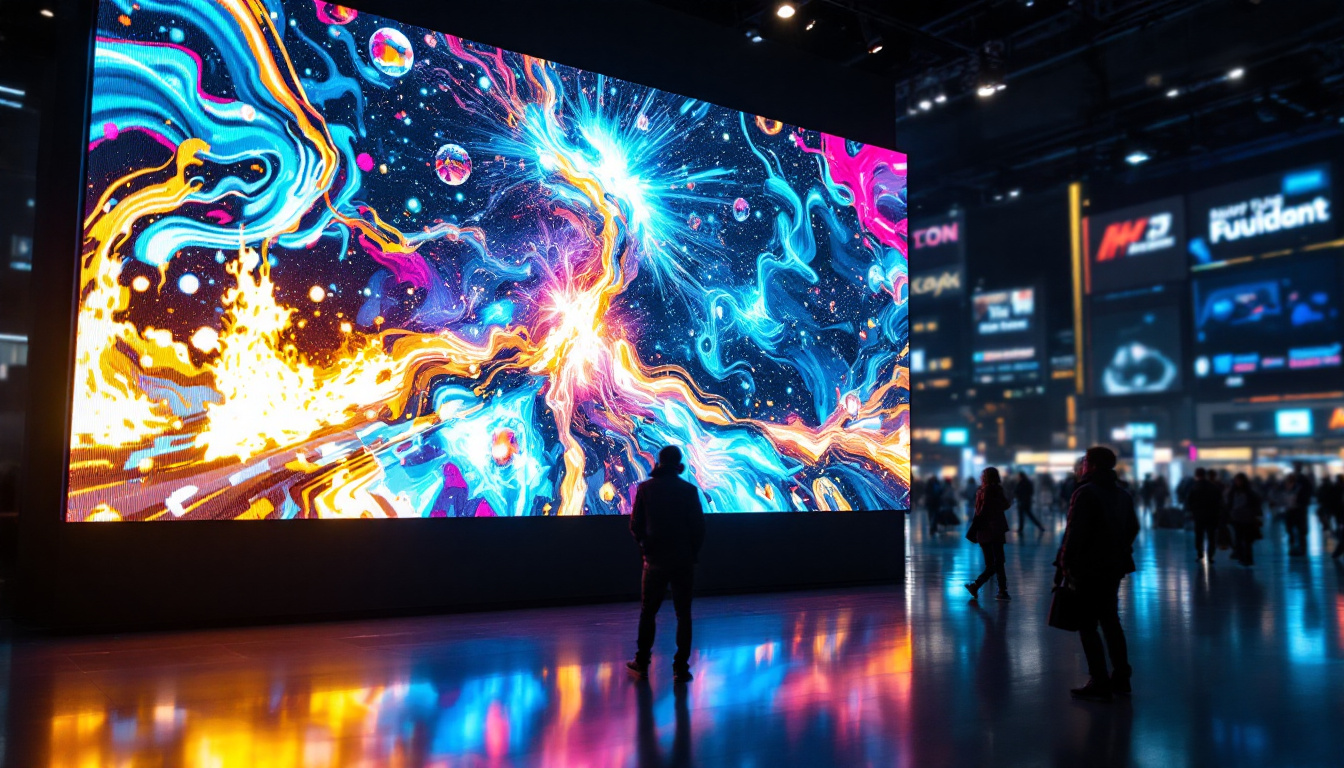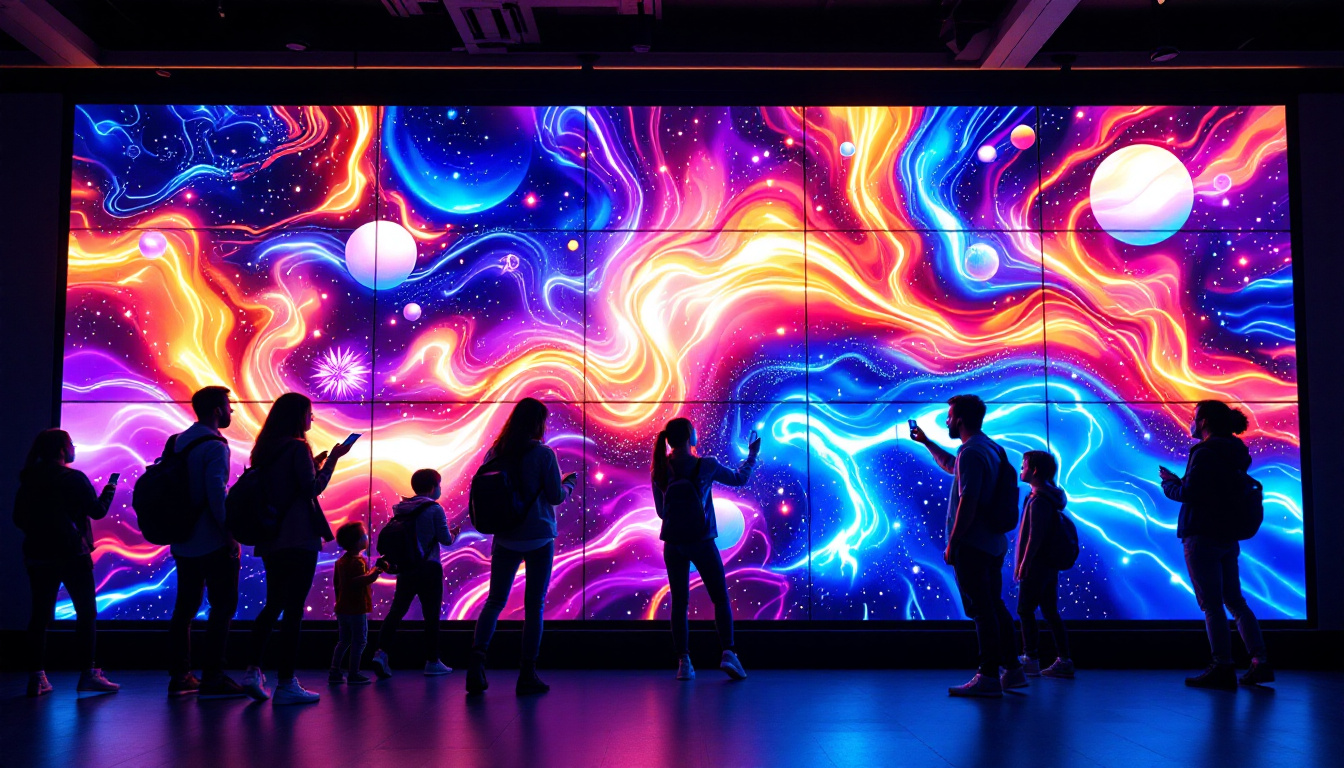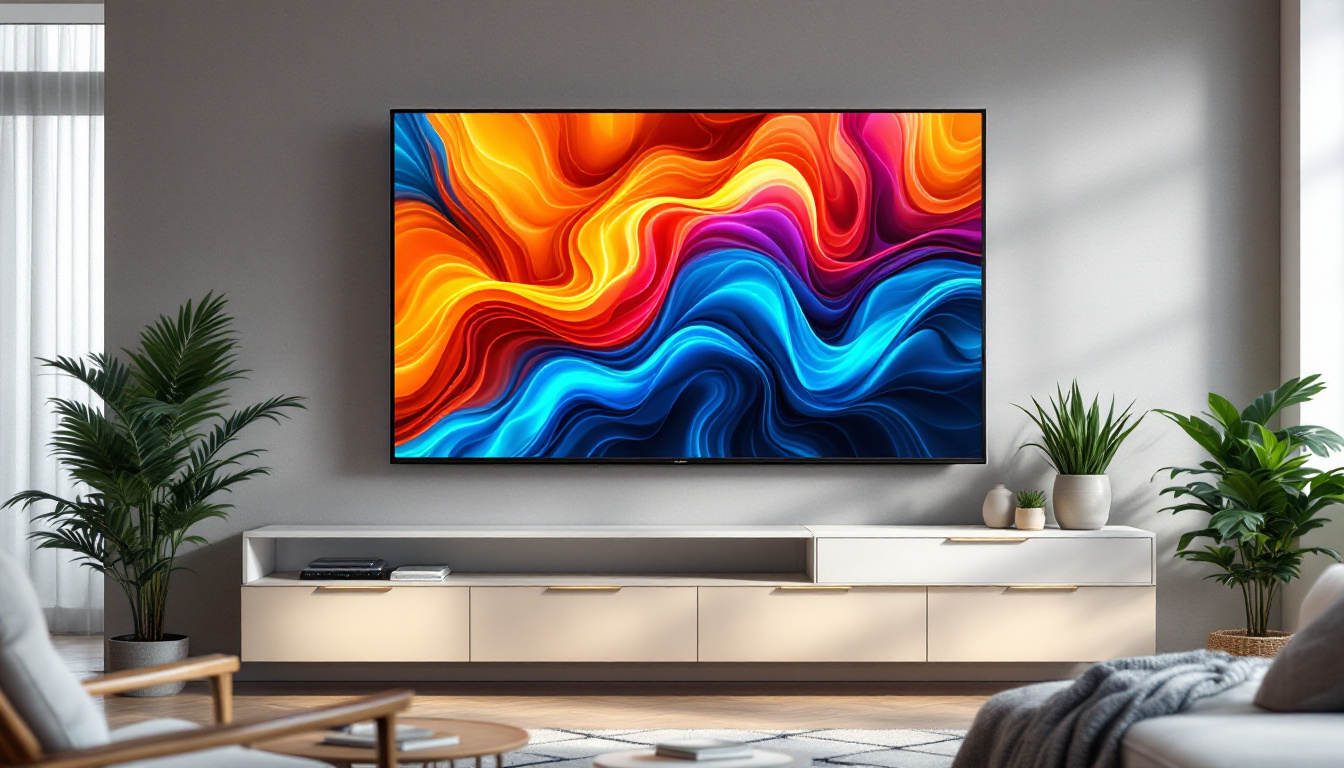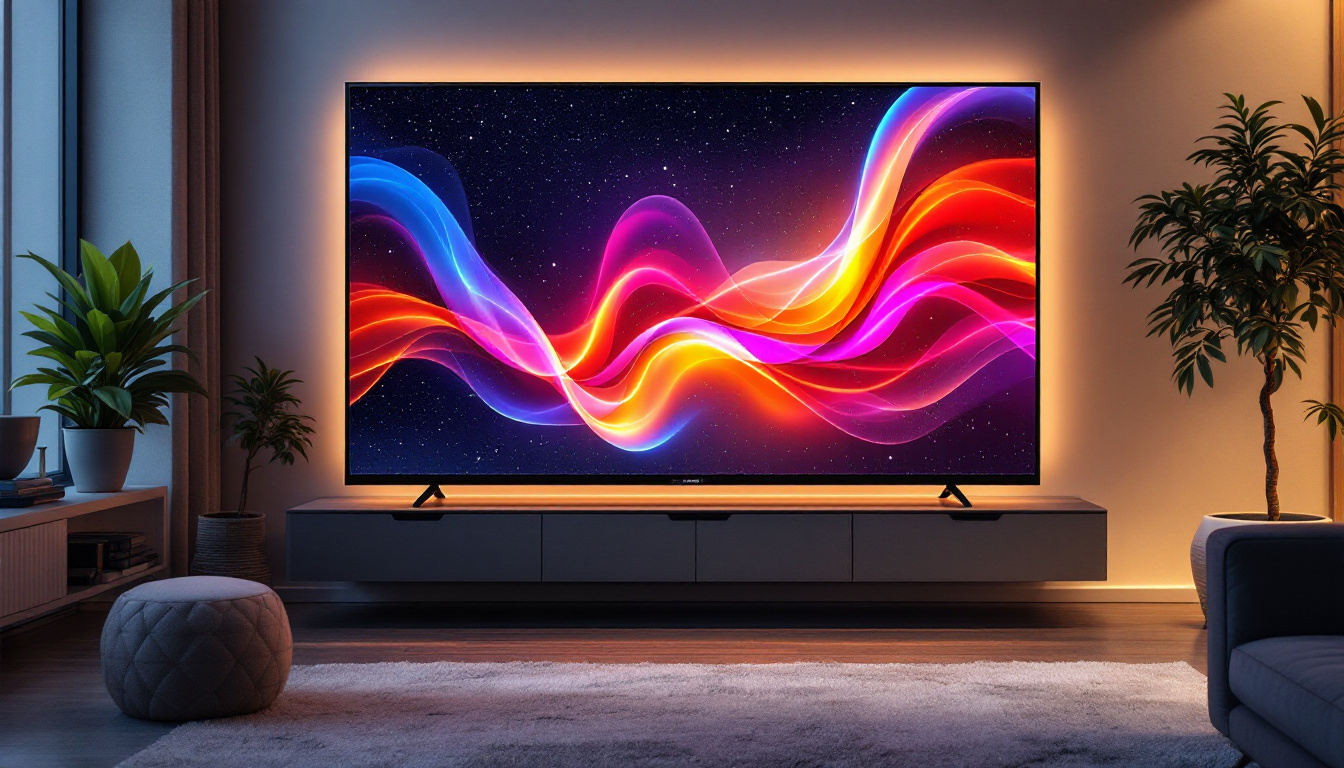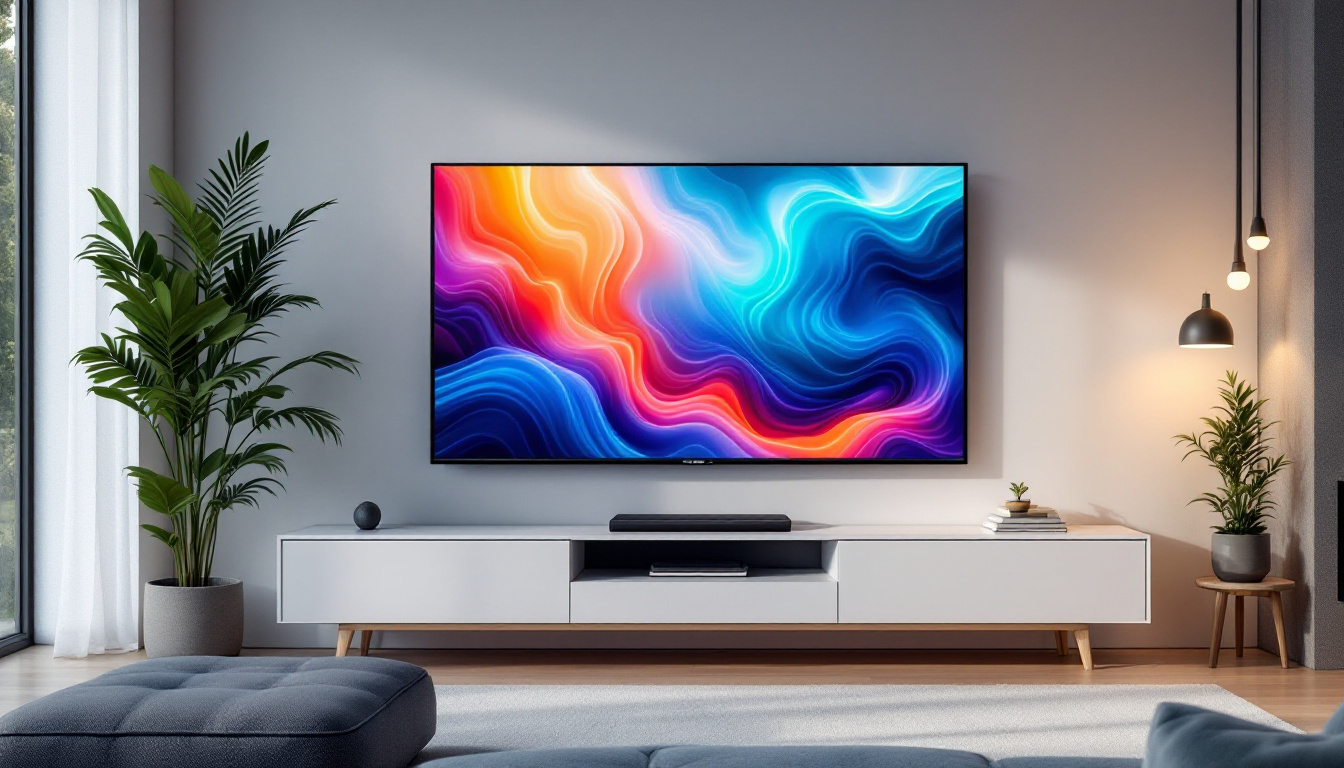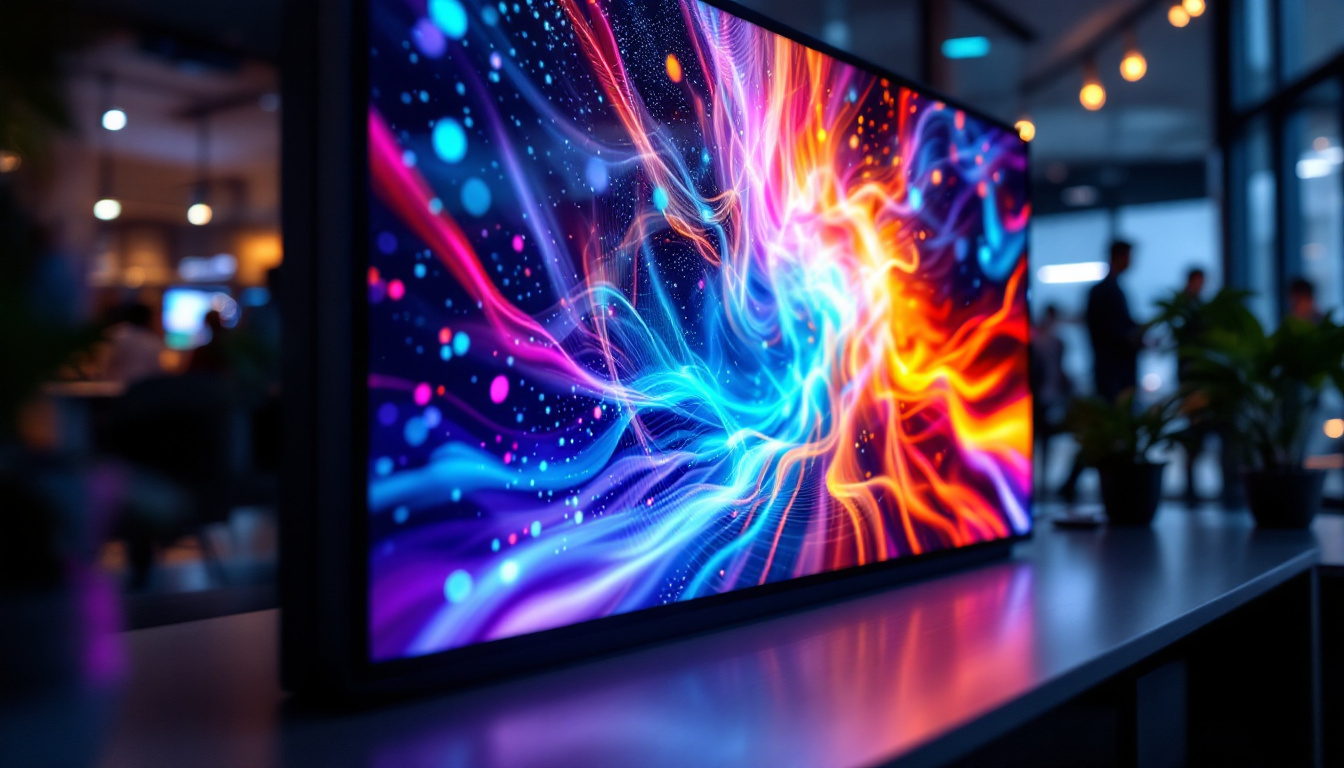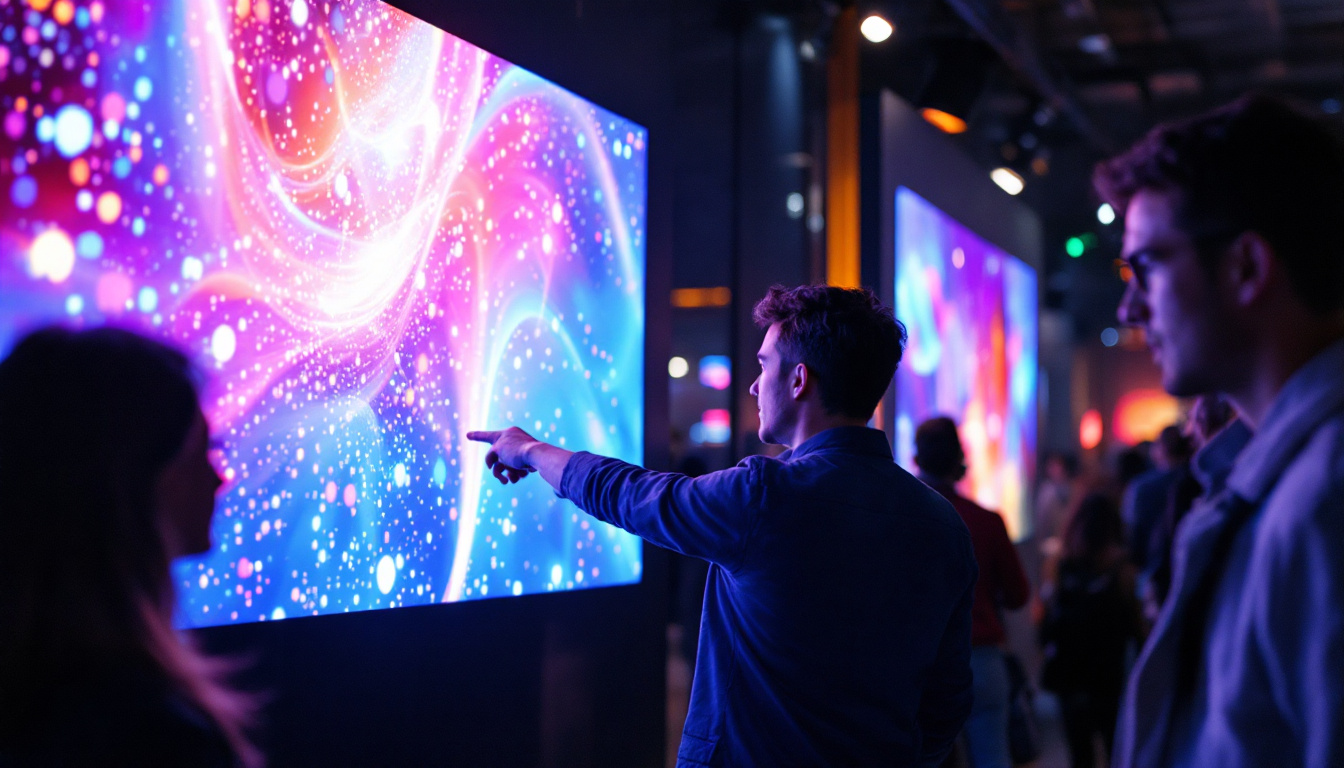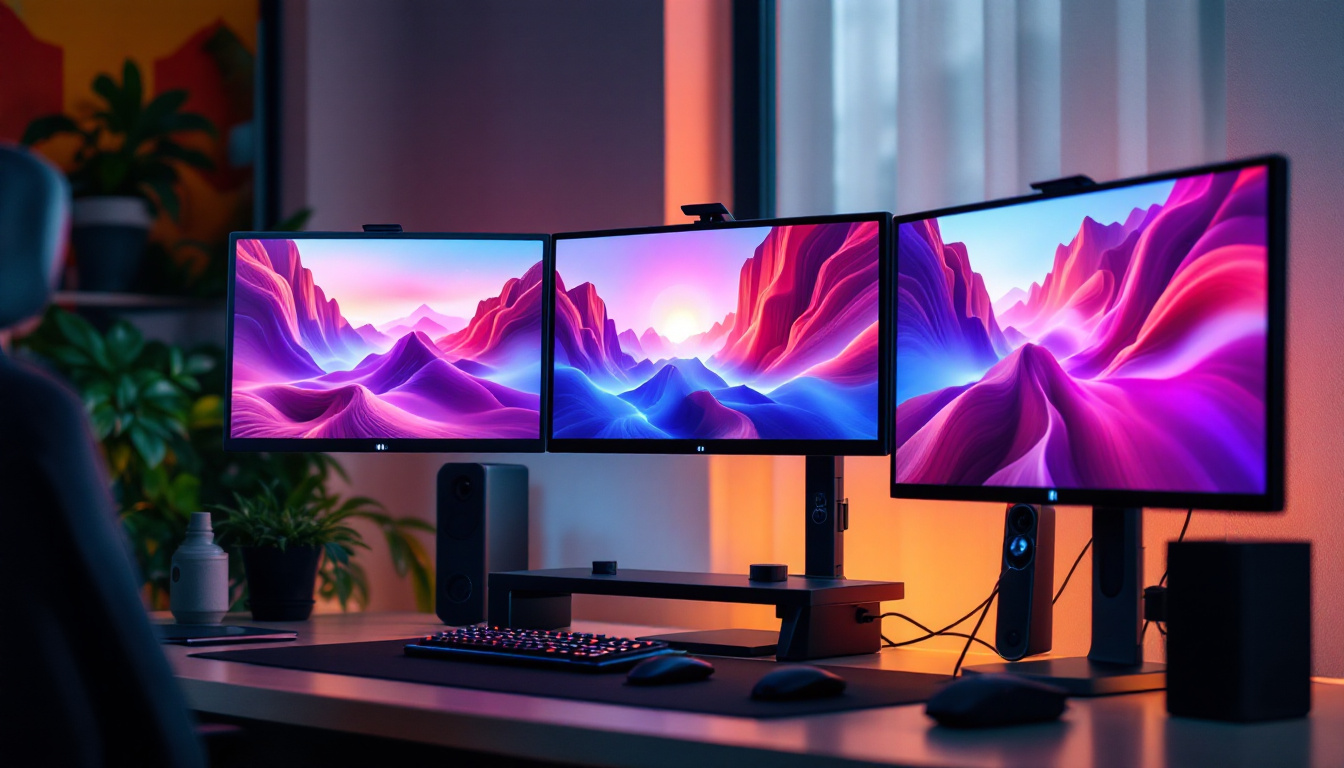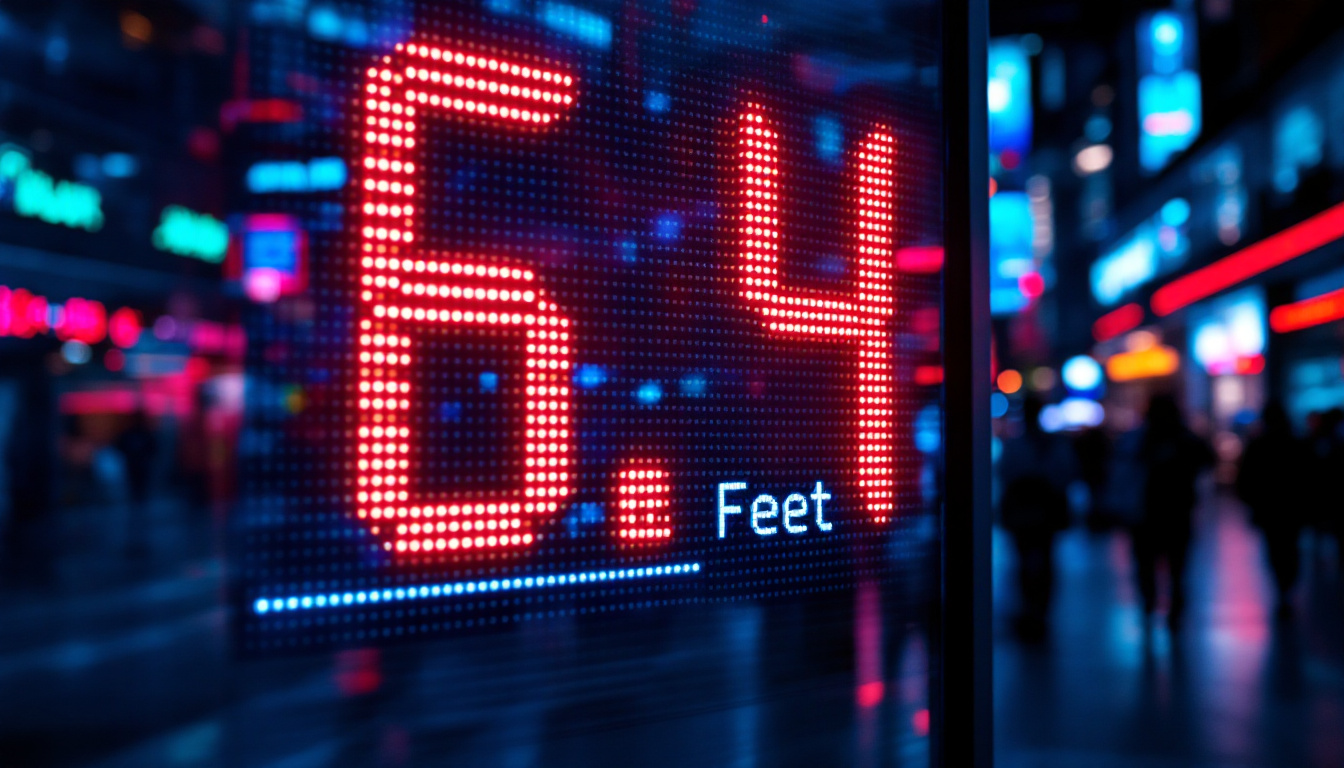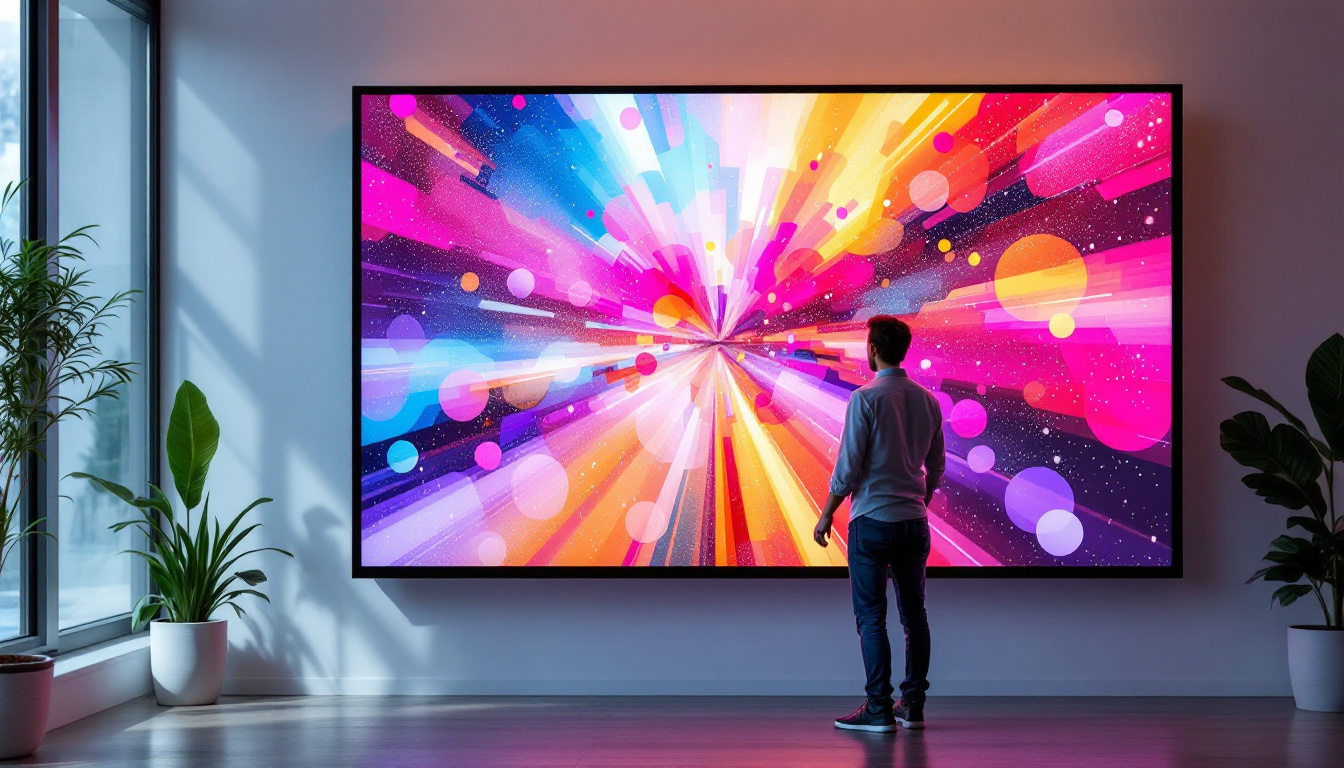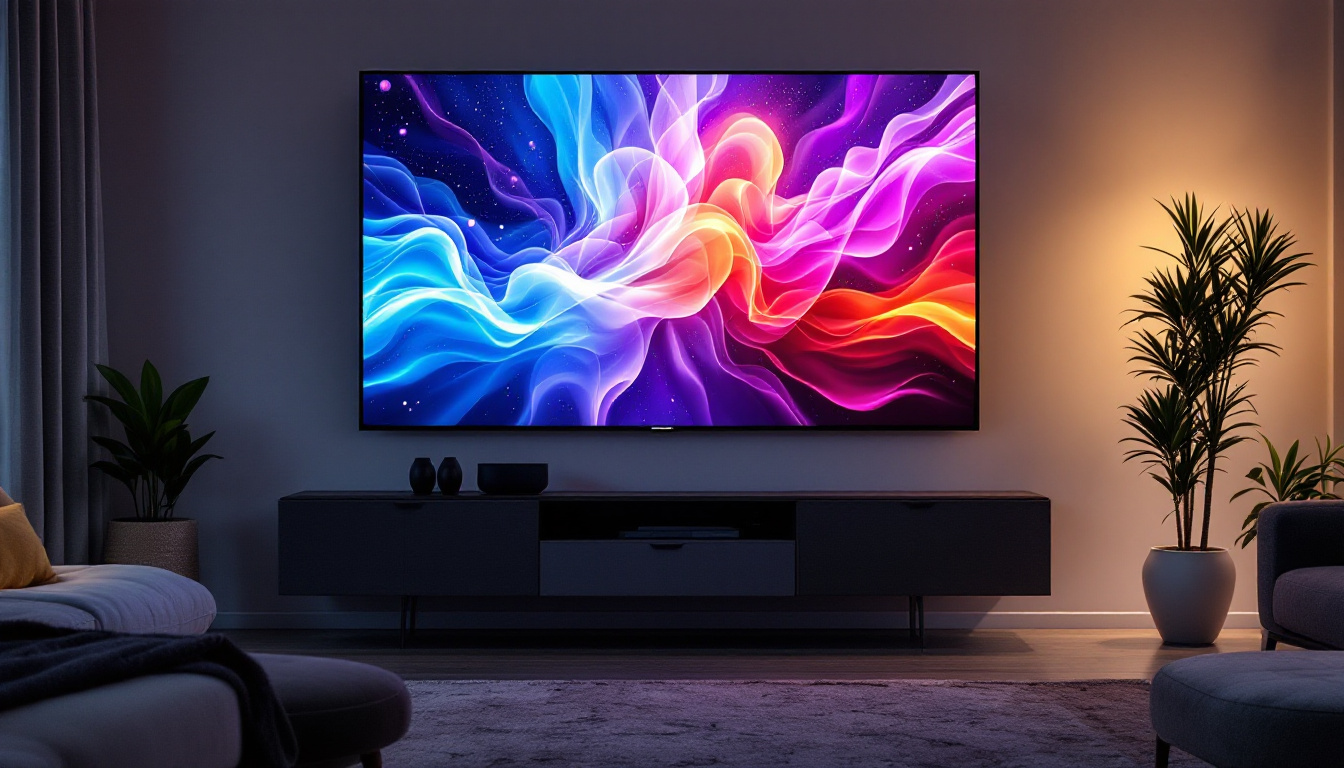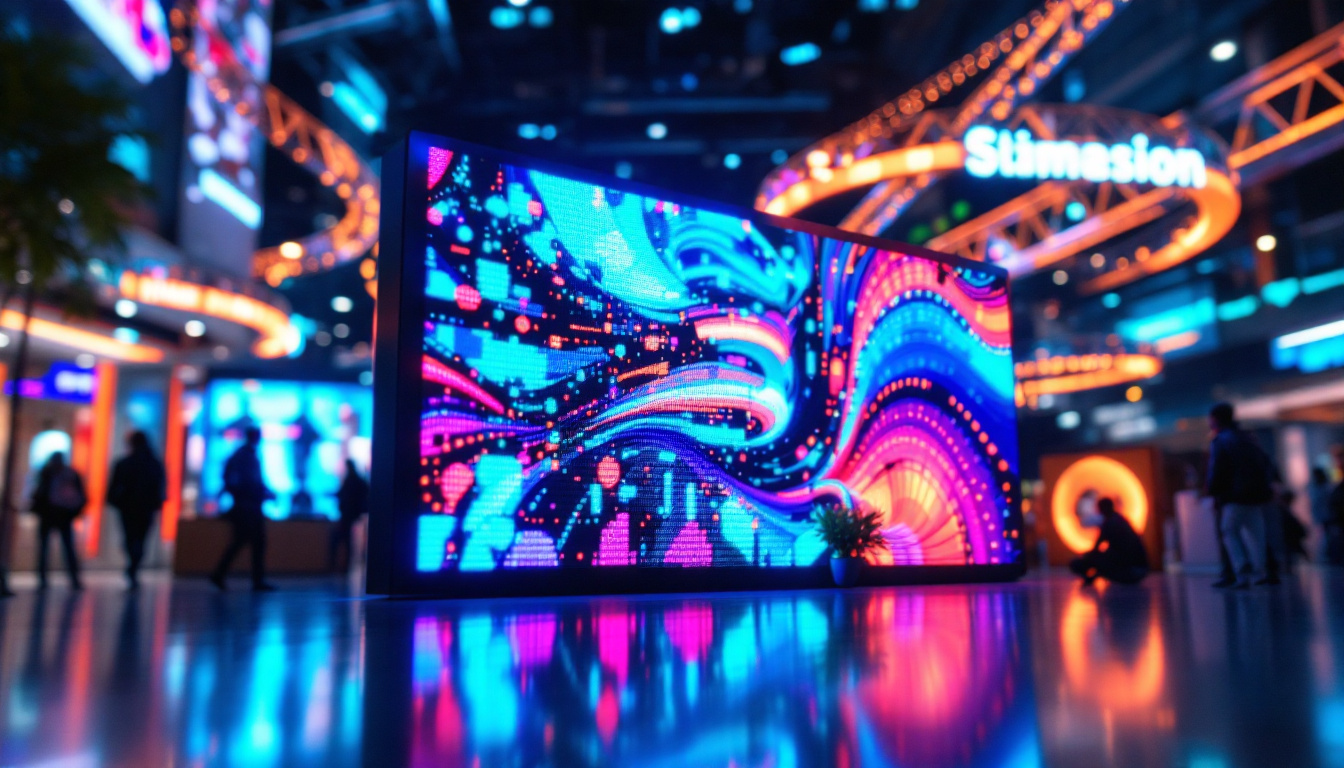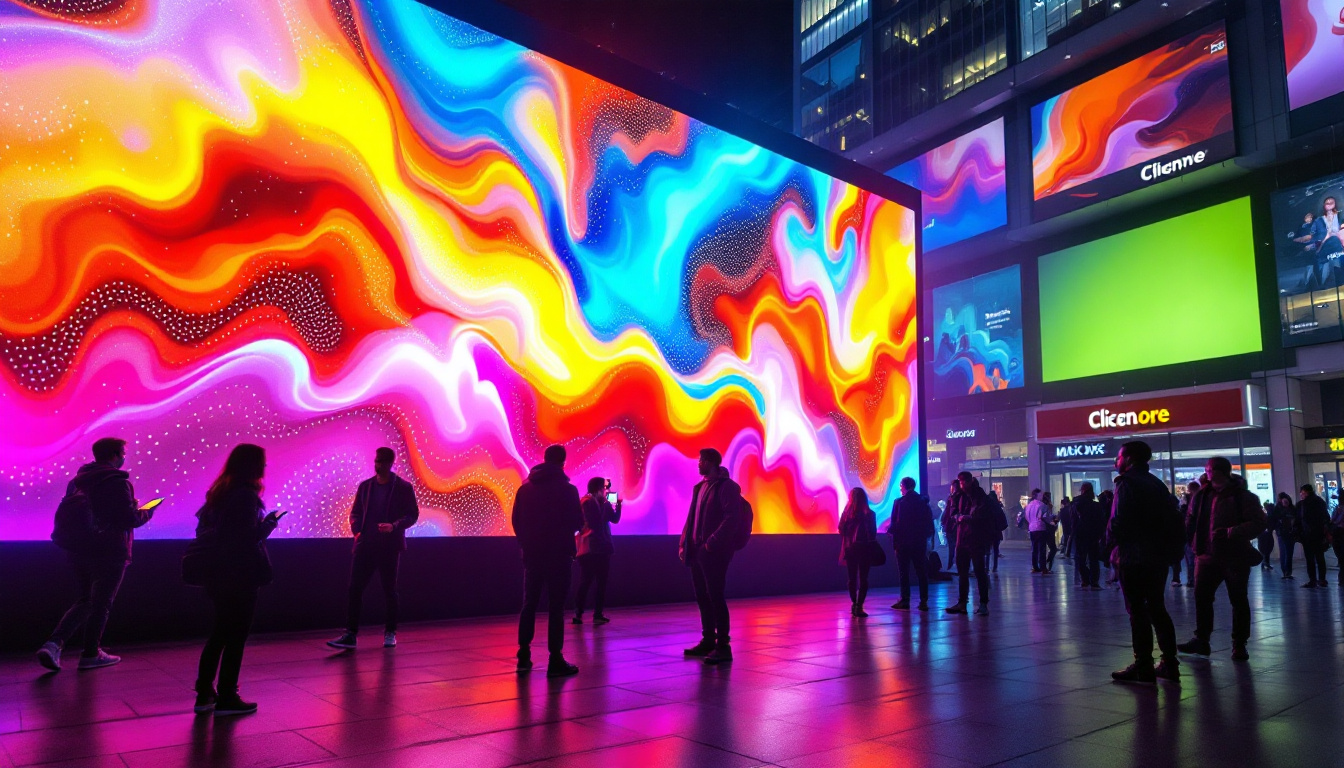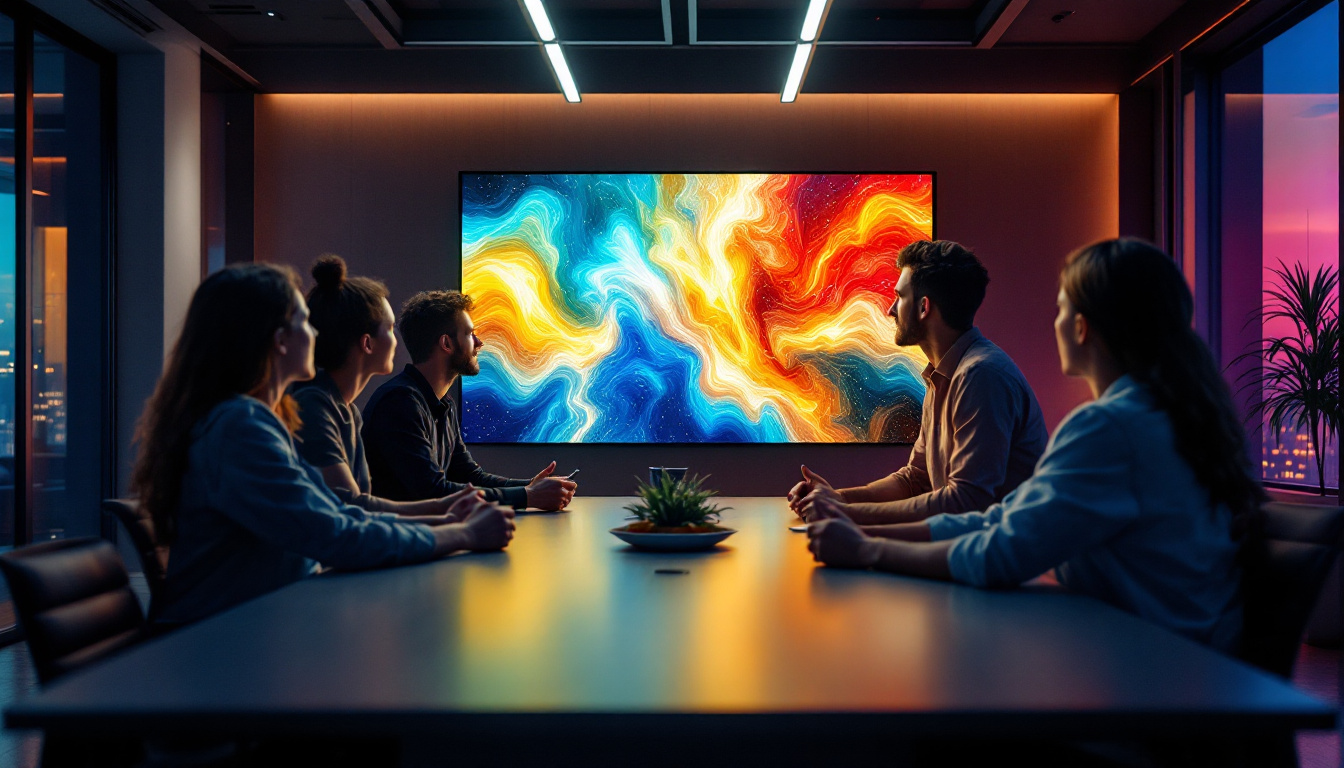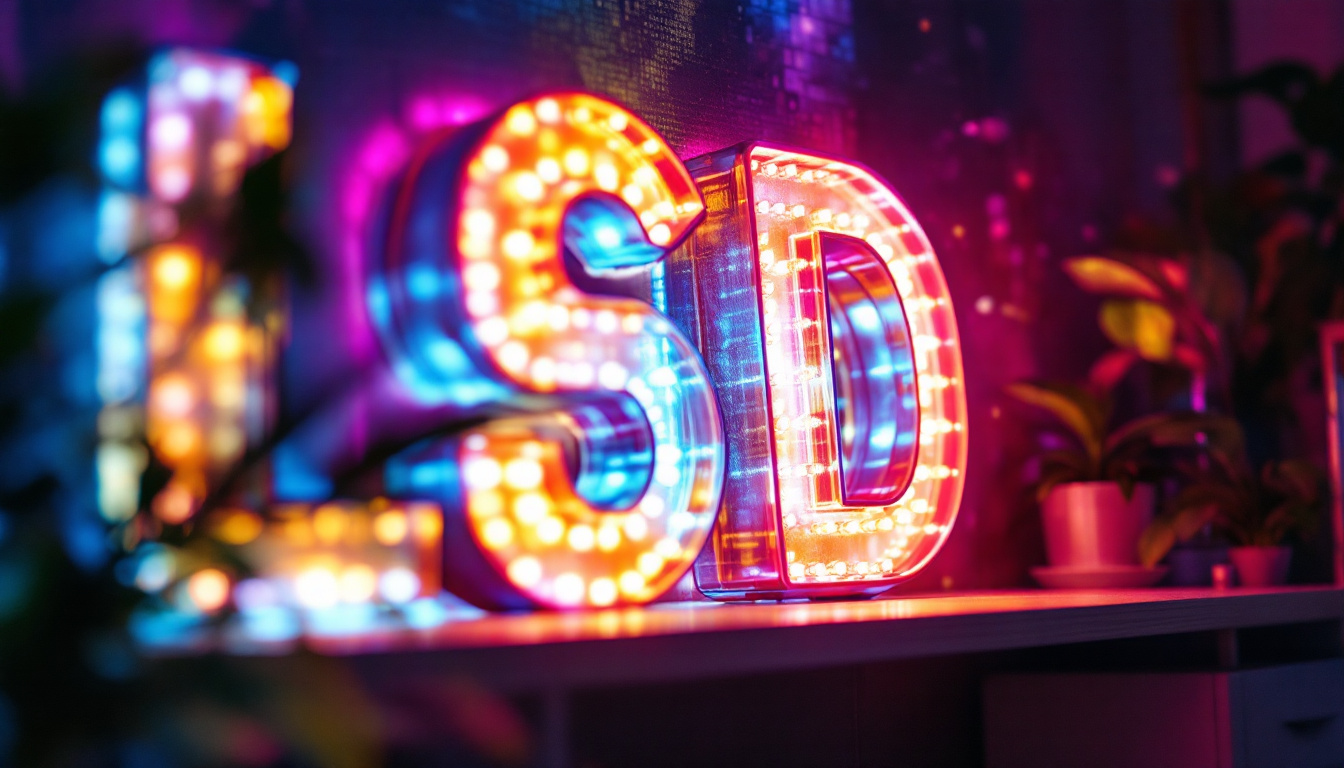In the world of home entertainment and professional presentations, projector screens play a pivotal role in delivering high-quality visuals. Among the various sizes available, a 100-inch projector screen stands out for its impressive display area, making it a popular choice for both home theaters and corporate environments. This article delves into the dimensions of a 100-inch projector screen, the technology behind LED displays, and how to choose the right screen for your needs.
Understanding Screen Sizes
When discussing projector screens, size is a crucial factor that directly impacts the viewing experience. A 100-inch screen refers to the diagonal measurement from one corner of the screen to the opposite corner. This measurement provides a clear indication of the screen’s overall size, but it is essential to understand how this translates into width and height. The size of the screen can dramatically influence not just the clarity of the image but also the comfort level of the audience. A screen that is too large can lead to neck strain as viewers turn their heads to take in the entire image, while a screen that is too small may leave viewers squinting to see details. Thus, selecting the right size is a balance between the space available and the intended use.
Aspect Ratios
The aspect ratio of a screen defines the relationship between its width and height. Common aspect ratios for projector screens include 16:9, 4:3, and 2.35:1. For a 100-inch screen, the most prevalent aspect ratio is 16:9, which is ideal for modern HD content. This ratio is particularly favored for cinematic presentations and streaming services, as it closely matches the format of most films and television shows today. Conversely, the 4:3 aspect ratio, once the standard for older televisions and projectors, is still used in some educational settings and for displaying legacy content. The 2.35:1 aspect ratio, often referred to as CinemaScope, is used for a more immersive cinematic experience, making it a popular choice for home theaters aiming to replicate the feel of a movie theater.
For a 100-inch screen with a 16:9 aspect ratio, the dimensions would be approximately 87.2 inches in width and 49 inches in height. This size is perfect for movies, television shows, and presentations, offering an immersive viewing experience without overwhelming the viewer. The wider format allows for a more expansive view, making it easier to appreciate the details in a scene, whether it’s the subtle expressions of actors or the intricate designs of a presentation slide. Additionally, the 16:9 ratio is particularly advantageous for multi-screen setups, where multiple projectors can be aligned seamlessly for a cohesive display.
Calculating Screen Dimensions
To calculate the width and height of a projector screen based on its diagonal measurement and aspect ratio, one can use the following formulas:
- Width = Diagonal / √(Aspect Ratio Width² + Aspect Ratio Height²) × Aspect Ratio Width
- Height = Diagonal / √(Aspect Ratio Width² + Aspect Ratio Height²) × Aspect Ratio Height
For example, using the 16:9 aspect ratio, the calculations would yield the previously mentioned dimensions. Understanding these calculations is essential for ensuring that the screen fits well in the intended space. Moreover, it’s important to consider the viewing distance when selecting a screen size. The general guideline suggests that viewers should sit at a distance of 1.5 to 2.5 times the diagonal size of the screen for optimal viewing. This means for a 100-inch screen, the ideal viewing distance would range from approximately 12.5 to 20.8 feet, allowing for a comfortable and engaging experience. This consideration is particularly vital in larger venues, where audience members may be seated at varying distances from the screen.
LED Display Technology
LED (Light Emitting Diode) technology has revolutionized the way we view images and videos. Unlike traditional projection methods that rely on lamps, LED displays utilize semiconductor technology to produce light. This advancement offers several benefits that enhance the viewing experience.
Advantages of LED Displays
LED displays are known for their vibrant colors, high contrast ratios, and energy efficiency. The ability to produce deeper blacks and brighter whites allows for a more dynamic range of colors, making images appear more lifelike. Additionally, LED screens consume less power compared to traditional projection systems, which can lead to cost savings over time.
Another significant advantage is the longevity of LED technology. With a lifespan that can exceed 50,000 hours, LED displays require less frequent replacements, reducing maintenance costs and downtime. This durability makes them an ideal choice for both commercial and residential applications, where reliability is paramount. Furthermore, the robust nature of LED displays means they are less susceptible to damage from shock and vibration, making them suitable for a variety of environments, including outdoor settings where weather conditions can be unpredictable.
Resolution and Clarity
The resolution of an LED display is another critical factor to consider. A 100-inch screen can support various resolutions, including Full HD (1920 x 1080) and 4K (3840 x 2160). The higher the resolution, the clearer and more detailed the image will be, especially when viewed from close distances.
For those using a 100-inch screen for home theater purposes, opting for a 4K resolution can significantly enhance the viewing experience, providing sharp images and vibrant colors that bring movies and shows to life. Moreover, advancements in LED technology have also introduced features like HDR (High Dynamic Range), which further improves the contrast and color accuracy of the display. This means that viewers can enjoy a more immersive experience, with scenes appearing more realistic and engaging. As content creators increasingly produce media optimized for these high-resolution formats, having an LED display that can fully utilize these advancements becomes essential for any serious home theater enthusiast.
Choosing the Right Projector Screen
Selecting the right projector screen involves considering several factors beyond just size. Understanding the environment where the screen will be used and the type of content that will be displayed is essential for making an informed decision.
Ambient Light Considerations
One of the most critical aspects to consider when choosing a projector screen is the ambient light in the viewing area. In brightly lit rooms, a screen with a higher gain can help improve image brightness and clarity. Conversely, in darker environments, a lower gain screen may be sufficient and can enhance contrast.
For a 100-inch screen, a matte white surface is often recommended for home theaters, as it provides a balanced viewing experience. However, for conference rooms or other environments with more ambient light, a high-gain screen may be necessary to ensure visibility.
Additionally, it’s worth noting that the color of the walls and the overall decor of the room can also affect how light interacts with the screen. Light-colored walls may reflect more light and create a washed-out image, while darker walls can absorb excess light, thereby enhancing the viewing experience. Therefore, when setting up a projector screen, consider the entire room’s color scheme and lighting to achieve optimal results.
Screen Material and Texture
The material and texture of the screen can significantly impact image quality. Various materials are available, including vinyl, fabric, and specialized coatings that enhance reflectivity. Each material has its advantages and disadvantages, so it is essential to choose one that aligns with the intended use of the screen.
For example, a vinyl screen may be more durable and easier to clean, while a fabric screen may provide better color reproduction. Understanding the specific needs of the environment will guide the selection process.
Moreover, the texture of the screen can play a pivotal role in how images are perceived. A smooth surface is typically ideal for high-resolution content, as it minimizes distortion and maintains clarity. On the other hand, a textured surface can diffuse light and may be better suited for environments where viewers are seated at varying angles, ensuring a more uniform viewing experience. Therefore, it’s crucial to assess not just the material but also the texture to match the specific requirements of your setup.
Installation and Setup
Proper installation and setup of a 100-inch projector screen are vital for achieving optimal performance. The placement of the screen, projector, and seating arrangement all play a role in the overall viewing experience.
Screen Placement
The height at which the screen is mounted can significantly affect visibility. Ideally, the center of the screen should be at eye level when seated. For a 100-inch screen, this typically means mounting it approximately 48 inches from the floor, but this can vary based on the seating arrangement and the height of the viewers.
Additionally, the distance between the projector and the screen is crucial. Most projectors have a specified throw ratio, which determines how far away they need to be placed to project a clear image of a certain size. For a 100-inch screen, this distance can range from 10 to 12 feet, depending on the projector model.
Seating Arrangement
The seating arrangement should also be considered to ensure that all viewers have an unobstructed view of the screen. For a 100-inch display, it is generally recommended to sit at a distance of 1.5 to 2.5 times the screen’s diagonal size. This means that viewers should ideally be seated between 8.5 to 16.5 feet away from the screen for the best experience.
Conclusion
In summary, a 100-inch projector screen offers an impressive display area that can enhance both home entertainment and professional presentations. Understanding the dimensions, aspect ratios, and the technology behind LED displays is essential for making an informed decision. By considering factors such as ambient light, screen material, and installation, users can create an optimal viewing environment that maximizes the benefits of their projector screen.
Whether for watching movies, playing video games, or delivering impactful presentations, investing in a high-quality projector screen can significantly elevate the viewing experience. With the right setup and considerations, a 100-inch screen can provide stunning visuals that captivate audiences and enhance any viewing occasion.
Discover LumenMatrix LED Display Solutions
Ready to transform your viewing experience with a 100-inch projector screen? LumenMatrix is at the forefront of LED display technology, offering a wide array of innovative solutions tailored to your needs. From immersive Indoor LED Wall Displays to dynamic Outdoor LED Wall Displays, and from versatile Vehicle LED Displays to sleek LED Poster Displays, our products are designed to captivate and engage. Explore our LED Sports Displays for thrilling game experiences, Floor LED Displays for interactive environments, Custom LED Displays for unique applications, All-in-One LED Displays for convenience, and LED Transparent Displays for a modern touch. Elevate your visual communication with LumenMatrix and create unforgettable visual experiences. Check out LumenMatrix LED Display Solutions and see the difference cutting-edge technology can make.

